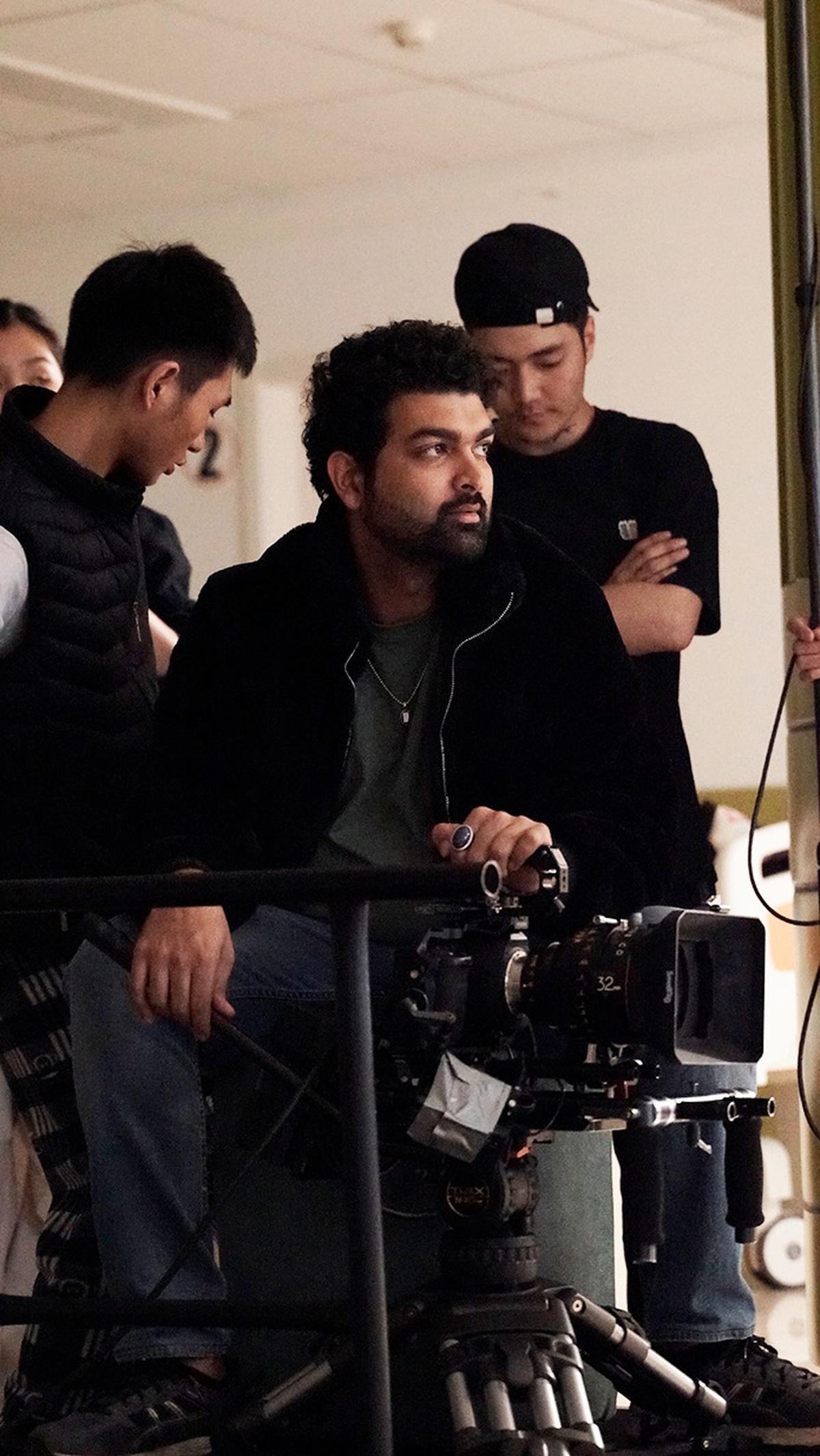Antony Samson during the shoot in Mongolia
| Photo Credit: SPECIAL ARRANGEMENT
When cinematographer Antony Samson got a chance to shoot in Mongolia, he was excited. What he did not factor in was being the only English speaker on a crew which barely knew any English and using hand gestures to explain camera angles or the light positions. “Until I went there, Mongolia meant Genghis Khan to me!”
The 10-episode web series he shot, Pictures of Murder (English title), directed by Dorjsuren Shadav, is streaming on a Mongolian OTT platform VOO.
“There were times when I was tempted to quit and return home. But, I knew, I would regret it if I did so I hung on,” says Antony, 29. Since there are no daily flights to India made staying easier. He admits that he had no clue about what he was getting into when a friend told him of a Mongolian producer, Mungunzul Amgalanbaatar, looking for a cinematographer from the South Indian film industry.
“Mungunzul, who is also an actor, knows director Anil Kumar. She, with her husband, Dorjsuren, had been to Alappuzha and visited Anil Kumar. He was supposed to direct a film starring her in the lead role. She is familiar with South Indian films, maybe that is why she wanted a cinematographer from here,” Antony adds.

Antony who studied cinematography at the LV Prasad Film Institute, Chennai, has been assistant director for films such as Darwinte Parinamam, Sethum Aayiram Pon, Thumbaa and Bheeshma Parvam. He is now an independent ad film maker based in Bengaluru; he is in discussions for his next film project as cinematographer. “After being part of a film like Bheeshma Parvam, with Mammootty, directed by Amal Neerad, and assisting Anend C Chandran I figured it was time to strike out independently,” he says. Pictures of Murder is his first as an independent cinematographer.
He did not set out alone, he took an assistant from Chennai when he headed out to Ulaanbaatar. “Unfortunately, a month in, he had to return home due to a family emergency. So it was only me for then, for close to a month,” he says. Google Translate was not of much help either, especially on the set because he had to find translations of technical terms pertaining to filming.
“It is difficult trying to communicate camera angles without a language or rather a smattering of one. I had some reference shots saved on my phone, which I would show the director and I would get the idea across.” A student translator made available on set was of no help for the same reason. Russian is traditionally more commonly spoken in Mongolia than English.
He calls not being able to converse with another human being (aside from phone calls) “a different experience. If I wanted to have a face-to-face conversation, then it would have to be with my reflection in the mirror. ” There is a small Indian community in Mongolia, barely 1000-odd people, he adds. That is not to say he has not picked up any Mongolian. “The Mongolian for black cloth is khar daavu that I learnt because we needed it to cover the windows.”
The experience has toughened him, he jokes, “I can now do anything. Even build a rocket and go into outer space!”